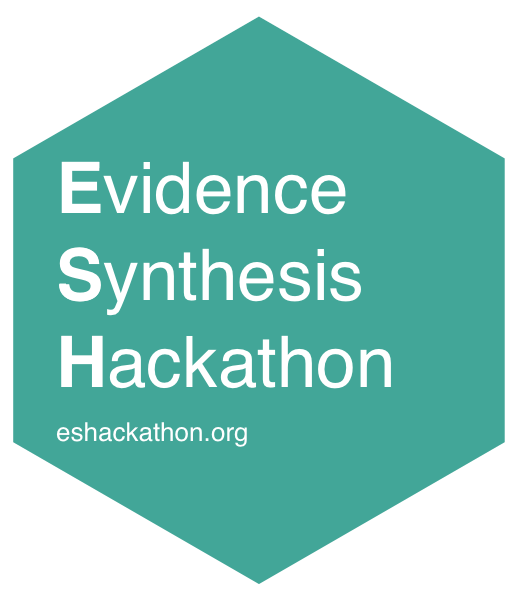What is the Evidence Synthesis Hackathon?
An interview with Neal Haddaway
So, what exactly is the Evidence Synthesis Hackathon?
Let’s start with Evidence Synthesis – this is the term we use to describe formal methods for identifying and summarising an evidence base in a rigorous, transparent and reliable way: for me it means systematic review and systematic mapping. These are complex, resource-intensive methods for providing evidence on a topic in a digestible format to help decision-makers to ensure they make the best policies and decisions.
Rigorous evidence synthesis can take a considerable amount of time and resources, and at the moment we’re seeing an explosion of evidence across all subjects. That makes it increasingly difficult for reviewers to summarise a topic, even when it’s quite narrow in scope.
In recent years, we’ve seen a huge growth in technology that can make our lives easier when we conduct evidence syntheses: from text analysis to machine learning. Much of the job of a systematic reviewer is very repetitive and there is a great scope for computers to automate or assist in these tasks: this is the essence of Evidence Synthesis Technology.
A ‘hackathon’ is a workshop where people work to solve problems; sometimes by writing code, but it can also involve planning out what future research or software might be needed. Martin Westgate and I first chatted in 2017 about using different tools (‘packages’) in the statistical software ‘R’ to support evidence synthesis. We rapidly realized that there was a large community of passionate coders and programmers who might be able to work with us to produce tools to assist reviewers, and so the Evidence Synthesis Hackathon (ESH) was born.
The ESH brings together diverse groups of coders from across the globe to learn about evidence synthesis and collaboratively produce tools to support evidence synthesis. The first ESH was in Stockholm in April 2018, and our second annual ESH is taking place in Canberra in April 2019. In 2018, participants produced 9 apps and 2 academic papers; a hugely productive event!
Why is technology important for Evidence Synthesis?
Evidence Synthesis Technology (ESTech) is not only important to help us deal with expanding evidence bases, but also to help reduce costs, increase timely production of evidence, and make rigorous evidence synthesis more accessible for people working in resource-constrained contexts, like organisations with small budgets or in the Global South. ESTech can help increase efficiency, accessibility, timeliness, transparency and rigour, to name just a few benefits. Essentially, it can help us to make the most of what evidence exists out there in the literature.
What does a hackathon involve? Is it only for programmers?
Our hackathons bring together diverse groups of people with a range of different skills to produce solutions for our main problems in evidence synthesis. People differ in their backgrounds (social scientists, natural scientists, computer scientists, mathematicians…) and the industries where they work (researchers, NGOs, start-ups, industry…). Further, attendees that can write code usually differ in the coding languages they use (R, java, python…). This diversity helps people to overcome problems by working as a team.
But the hackathon is more than just a computer science exercise – it’s primarily about solving problems, and some of this can be done by producing technology, whilst for other issues we need to identify and understand the problem. For that reason, we also rely heavily on evidence synthesis experts to think through some of the more fundamental issues facing evidence synthesis, for example, how we can deal with predatory journals or paywalled research. There is a vital place at the ESH for non-programmers as well in helping to understand these problems and identify possible solutions, some of which may require technology.
How did you get interested in Evidence Synthesis Technology?
I’ve always been the kind of person who, when faced with a tedious or repetitive task, would spend days trying to find or develop a tool that could do it for me. I wouldn’t call myself a ‘coder’ but I love what computers can do for us and how increasing efficiency can free up resources for more intellectual tasks and bigger problems. I got into evidence synthesis somewhat by accident, but I’m now very happy to combine my love for rigorous evidence synthesis with my systematic aversion to tedious tasks.
How can others get involved?
The best way to learn about evidence synthesis is to do one: conduct a systematic map or systematic review (after careful thought and planning!). Getting involved with the ESH is easy – until the end of January you can apply to join us in Canberra, and after that you can still have the opportunity to join remotely. We’ll be running ESH events throughout 2019 and beyond, so get in touch and find out more at evidencesynthesishackathon.com.
Posted 2019-01-17
